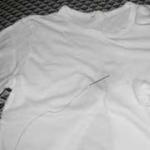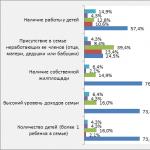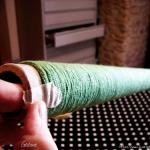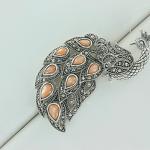Marcasite (stone): magical properties and decoration. Magical and healing properties of marcasite Who is suitable according to their zodiac sign: compatibility in astrology
Fashionistas who want to purchase jewelry are often interested in what it is - marcasite in silver and why this stone has a second name: drop silver. Recently, among jewelry manufacturers, marcasite is a trend - the stones that are most often used in silver jewelry.
Feminine beauty - a force that can motivate men to the most rash acts. Generals bring military victories to her altar, poets present her with kilometers of lines of poetry, jewelers decorate her with more and more trinkets inlaid with precious and semi-precious stones.
From mineralogy
Marcasite is nothing more than radiant pyrite. The stone emits a metallic luster of brass-yellow color, and when oxidized it shimmers with all the colors of the rainbow. Its deposits are mostly located in areas where hydrothermal springs are located.
Marcasite has an external resemblance to pyrite, but differs from it in the shape of the crystals, the shade of color and the fragility of the structure. If pyrite is easily confused with gold and is called fool’s gold, then marcasite is more similar to silver, and this similarity is the key to its name - “drop silver”.
The new is like the well-forgotten old - about the history of stone
In the East and North America
The history of the beginning of the use of marcasite is lost in the mists of time. It is known that in ancient times this mineral was used to make fire. The ancient Indians used marcasite to make mirrors. In modern museums in France and Lima, as confirmation of this, marcasite mirrors with the image of the Aztec deity - Quetzalcoatl are kept.
They began to use it as jewelry much later, when attention was paid to its decorative properties. Information has been preserved about the use of marcasite in ancient Persia and Egypt for the manufacture of women's jewelry.
During archaeological excavations in Iran, weapons and interior items inlaid with marcasite are still found.
Europe, Middle Ages
In medieval Europe, the estate flourished, regulating relations in all areas of life, imposing restrictions and prohibitions, including on the wearing of precious stones. Representatives of the lower classes, even when they became rich, did not have direct access to high society; their wives and daughters were forbidden to wear noble diamonds. Jewelers of that time came to the aid of rich merchants, who solved the problem and replaced the diamond with marcasite. This stone looked especially good in combination with silver.
The widespread use of the mineral attracted the attention of representatives of the upper classes to marcasite. The fine work of jewelers combined with the decorative properties of the stone made marcasite fashionable. Increased demand in the aristocratic environment gave rise to its use not only for women's jewelry, but also for decorating umbrellas, watches and garters.
War and peace of the 19th - 20th centuries
In the 19th century, during the Napoleonic wars, the countries that opposed the European barbarians experienced an unprecedented rise in patriotism. Men went to war without fear, women without regret donated gold and diamonds to the needs of the army. The government organized the issuance of iron jewelry in return for the donated jewelry, the highlight of which was marcasite. These trinkets became a source of special pride for patriotic women of that time.
It remained popular until the end of the 30s of the last century. Silver items with marcasite inserts were made according to sketches by famous designers. Fashionistas enjoyed decorating their toilets with a variety of silver items interspersed with this stone. Jewelers have achieved amazing results by combining marcasite with other precious and semi-precious stones.
The history of the popularity of the stone was interrupted by the 2nd World War. During this difficult time, all the mined marcasite was used for the needs of the military industry in order to produce sulfuric acid from it. After the war, jewelers again remembered this decorative stone.
In the mid-twentieth century, in the wake of nostalgia for prosperous pre-war times, silver items with marcasite inclusions, made according to sketches from the 1930s, came back into fashion. But marcasite in silver received a real new life from the hands of Thai jewelers at the end of the twentieth century.
Use of stone by modern craftsmen
Thanks to the imagination of oriental masters, every modern fashionista has the opportunity to emphasize her individuality by choosing bracelets, rings, earrings, pendants, pendants, brooches made of silver and marcasite. Each product is a real work of art; the craftsmen use not only classics, but also plant and zoological motifs.

The structure of marcasite is favorably emphasized by products made in the form of snakes, owls, and elephants. Marcasite and silver complement each other perfectly; agates, pearls, onyxes, emeralds, turquoise, and carnelian serve as decoration for trinkets.
Additionally attract buyers:
- low price of products - both silver and marcasite have a low cost, the high price of some items is explained by the fame of the brand and the popularity of the designer who worked on it;
- the healing and rejuvenating qualities of marcasite in combination with silver - this stone helps in curing diseases of the eyes and spleen, and alleviates depressive conditions;
- magical properties that the mineral has - Children wear a silver amulet with marcasite set into it as protection.
Product care
This is a rather fragile stone; you should not expose it to shock or moisture. If silver with marcasite inclusions has darkened, clean it so that the chemical solution does not get on the surface of the stone. To prevent chips and scratches, protect it from mechanical influences. Clean marcasite from dirt with a soft, dry cloth. Store marcasite and silver items in a tightly closed box or canvas bag.
Marcasite has long been known for its miraculous and healing properties. This mineral has several names and has enjoyed deserved popularity for several centuries.
The amazingly beautiful stone today is considered one of the most sought after for creating beautiful jewelry.
A little history
Previously, two minerals were called marcasite at once - marcasite itself and pyrite, but since 1814, when the Austrian scientist Wilhelm Heidinger proved that these two stones are completely different, they received different names. Due to its bright brass color, marcasite has a second name - radiant pyrite.
Our ancestors used the stone to make fire for a long time, so it was very popular in weapons. But when the mineral was polished and cut, it became more widely used. Europeans used it as a substitute for diamonds. Representatives of the French nobility received jewelry made of metal with marcasite in exchange for donated gold jewelry.
Marcasite was most popular in the early twentieth century. Then secular society began to call it drop silver, and almost every fashionista of that time had jewelry with this mineral.

Variety and colors
Being very light and brittle, marcasite crumbles and breaks easily. However, this property does not prevent it from being used as jewelry. However, marcasite is more often used in industry to produce sulfuric acid.
The colors of this mineral are orange-yellow with a green tint, from green to black. It has a unique bronze metallic luster, and when oxidized, a multi-colored coating forms on its surface. Marcasite looks most beautiful when set in white gold and silver. Jewelry can boast a wide range of jewelry made from steel with marcasite.
This stone has a variety - spectropyrite. This is a very beautiful mineral with a rainbow color. Spectropyrite is also used in jewelry making.
Properties: healing and magical
This stone is considered more masculine. But the Russian Empress Maria Fedorovna loved it very much and wore it almost all her life, believing that the mineral brings good luck in business. Cleopatra also preferred the gem to other stones and wore it in order to preserve her beauty and youth, but she was famous for her unearthly beauty!
 It is not recommended to wear the mineral for more than three days - its energy is so strong. It is believed that children should wear marcasite beads to protect themselves from the evil eye. The mineral is able to calm frayed nerves and bring harmony to a person’s life. Marcasite is intended for positive and kind people. It serves such people well, relieving them of adversity and protecting them from fear.
It is not recommended to wear the mineral for more than three days - its energy is so strong. It is believed that children should wear marcasite beads to protect themselves from the evil eye. The mineral is able to calm frayed nerves and bring harmony to a person’s life. Marcasite is intended for positive and kind people. It serves such people well, relieving them of adversity and protecting them from fear.
Since ancient times, marcasite has been used to treat skin diseases, ulcers, eye diseases and tumors. Grinding into powder, the rock was applied to abrasions and wounds, after which they healed quickly and relatively painlessly.
In addition, this stone cleanses the blood, heals the spleen, and helps get rid of warts, moles and freckles.
For nervous exhaustion and general weakness of the body, marcasite is simply irreplaceable. However, the mineral is not recommended for those who suffer from increased excitability.
Stone in astrology
The patron planets of marcasite are Mars and Neptune, thanks to which the stone acquired extraordinary power, which allowed shamans and sorcerers to successfully use it in their magical acts.
It is believed that this mineral can change the destinies of people in a variety of directions. However, not all zodiac signs are influenced by it.
Those born under the signs of Aries, Sagittarius and Scorpio can safely buy marcasite in order to improve their inner state and life in general. Under no circumstances is it recommended for Cancers and Pisces to wear this mineral. According to many astrologers, it will definitely bring them misfortune.
The eastern horoscope does not reveal any special possibilities for the influence of the stone on people born in a particular year.
Warm color and radiant shine have made this stone a real favorite of those who cannot stand monotony. And although this may seem strange, this mineral really looks somehow different every time in the same jewelry.
English name of the mineral Marcasite
origin of name
The name marcasite is ancient Arabic; originally used to refer to pyrite and marcasite. It comes from the ancient Arabic word “markashitsa” - fire stone (alchemists have the step - kasitae)
Synonyms: Radiant pyrite, spear-shaped pyrite, comb pyrite, leafy pyrite, cellular pyrite, white iron pyrite, water pyrite or water pyrite (Agricola, 1546), polyopyrite (Glocker, 1839), hydropyrite (Glocker, 1847), kirosite (Breighauit, 1843), binarite (Frendel, 1874), partially liver pyrite - hepatopyrite (Werner, Breithaupt, 1866), partly styrian - nickel-containing marcasite (Breithaupt, 1849). Lonchidite (Breithaupt, 1849) and metalonchidite (Seidberger, 1887) are apparently mixtures of marcasite with arsenopyrite.
Chemical composition
From the formula FeS 2: Fe - 46.55; S - 53.45. Sometimes there is some deficiency of S. It often contains an admixture of As; impurities of Ni, Co, Bi, Sb, and Cu are also noted.
Varieties Black powdery variety - melnikovite-marcasite
Crystallographic characteristics
Rhombic system, 3L 2 3PC.
Class rhombic-bipyramidal D 2h 12 -Pnnm. Axle ratio. 0.762:1:1.218.
Crystal structure
Marcasite crystals are characterized by their spear-shaped or tabular shapes, which distinguishes them from pyrite crystals. In concretions and dense masses it is not easily distinguished from pyrite. Such formations found in sedimentary rocks are often traditionally mistaken for marcasite without testing, but testing shows that about 80% of such nodules are composed of pyrite. A fresh fracture is characterized by a greenish tint, which is not characteristic of pyrite. In polished sections under a microscope, it is easily distinguished from pyrite by the strongly pronounced effects of optical anisotropy. It also differs significantly from pyrite in its diffraction pattern.
Satellites. Pyrite, chalcopyrite, sphalerite, galena, pyrrhotite and other sulfides. Marcasite, under the influence of atmospheric oxygen, transforms into brown iron ore with the release of sulfurous and sulfuric acids, which decompose surrounding minerals.
Origin and location

In nature, marcasite is much less common than pyrite. It is found in both endogenous and exogenous mineral formations.
Marcasite of endogenous origin is observed in hydrothermal, predominantly vein deposits. As a rule, it is formed in the very last stages of mineralization. Most often, it is established in drusy voids in the form of overgrown crystals, mostly small, sometimes in the form of dust-like deposits on crystals of quartz, calcite, galena, sphalerite, fahlores and other minerals, less often in the form of crusts and spherulite forms.
Formed mainly at low temperatures. It is present in the form of nodules in coals, often in brown coals and limestones. In chalk deposits in northern France, radial concretions of marcasite with a brown oxidation crust composed of limonite are found. Marcasite concretions were often mistaken for meteorites.
In sedimentary rocks, mainly in coal-bearing sandy-clayey deposits, marcasite occurs mainly in the form of concretions, irregularly shaped grains and pseudomorphs of organic remains, as well as fine black sooty substance (melnikovite). Based on its macroscopic features, it is sometimes mistaken for pyrite.
Under conditions of oxygen weathering marcasite decomposes more easily than pyrite, with the formation of iron sulfates and free sulfuric acid, and in conditions of lack of oxygen - also native sulfur. Ultimately, the oxidation of marcasite produces iron hydroxides (limonite). Experimental studies have established that marcasite, unlike pyrite, is relatively easily formed from acidic solutions at lower temperatures. In contrast to pyrite, it does not form large deposits in nature in the form of continuous ores.
Render(( blockId: "R-A-248885-7", renderTo: "yandex_rtb_R-A-248885-7", async: true )); )); t = d.getElementsByTagName("script"); s = d.createElement("script"); s.type = "text/javascript"; s.src = "//an.yandex.ru/system/context.js"; s.async = true; t.parentNode.insertBefore(s, t); ))(this, this.document, "yandexContextAsyncCallbacks");
Mineral Change
During metamorphism processes under conditions of elevated temperatures and elevated pressure marcasite turns into pyrite. Many concretions in sedimentary rocks that have preserved the columnar and radial structure of marcasite aggregates, upon detailed study in reflected light, turn out to consist of pyrite, which confirms the instability of marcasite and its transition over time to pyrite as a result of polymorphic transformation.
In the oxidation zone it produces the same products as pyrite.
Marcasite deposits
Of the hydrothermal sulfide deposits in which marcasite, along with pyrite, is found in more or less significant quantities, Blavinskoye in the Orenburg region (Southern Urals) should be noted as an example. It is represented here by fine-crystalline, sporadically distributed aggregates. In addition to pyrite, sphalerite, wurtzite, chalcopyrite, quartz, etc. are found in association with marcasite.
Sedimentary marcasite-containing rocks are widespread in many regions of Russia. These include, for example, coal-bearing deposits of the Moscow region brown coal basin (Tula region), containing various forms of marcasite and pyrite nodules. The Kuryi-Kamenskoe and Troitsko-Bainovskoye deposits of clayey deposits on the eastern slope of the Middle Urals (east of Yekaterinburg) are famous for the variety of forms of marcasite nodules. In addition to spherical nodules, kidney-shaped concretions, concretions with a radial arrangement of individuals ending in well-defined spear-shaped twins, are widespread here.
Among the foreign ones, it should be noted the hydrothermal deposits of Clausthal and Freiberg (Germany), in which perfectly formed crystals of marcasite were found, etc.
Practical use
Doesn't have it. Marcasite, which produces clusters, can serve as a raw material for the production of sulfuric acid and sulfur.
Physical research methods
Ancient methods. Under the blowpipe it behaves like pyrite, becomes cracked and fused into a magnetic ball; In a closed glass tube, when heated, a sublimation of sulfur is formed.
Crystal optical properties in thin preparations (sections)
In polished sections in reflected light, marcasite is yellowish-white. Reflectivity. (in%): for yellow rays 55, for green - 52, for orange - 45.5, for red - 44.5. Bi-reflection in the air is clear: || a - white with a pinkish-brown tint, || b light yellowish, || c - creamy white (double reflection is stronger in immersion). Highly anisotropic with a color effect ranging from green to reddish purple.
The name of the mineral marcasite sounds like a similitude to an aristocratic title, but experts know: the word marcasitae made its way from Farsi into Latin, and there is nothing noble in it... “Drip silver” is another matter, although according to the logic of things, marcasite should be called as poetically as you like , but not at all.
Because there is not even a drop of silver in the mineral, only iron. But even though it looks pure, it contains only iron and sulfur! Moreover, in the same proportions as the marcasite stone...
Is there a mystery here?
Physical properties of marcasite
For the mineralogist Marcasite is an ordinary iron pyrite, the half-brother of pyrite- only a different morphology. If pyrite crystals form regular cubes, then the crystallization of marcasite proceeds like the crystallization of water - by rays. 
True, marcasite “snowflakes” are voluminous and weighty, and they are much less common than real snow. Acicular crystals of marcasite grow into formations resembling star-shaped clusters or brass blots. Marcasite deposits that have not undergone crystallization retain the imprints of trapped organisms.
- Chemical formula - FeS2.
- Color - yellow, greenish with a gray tint, black.
- The system is cubic.
- Hardness - 6 on the Mohs scale.
- Density - 4.9 g per cm3.
- The fracture is conchoidal.

The composition of marcasite often contains impurities of non-ferrous and heavy metals. Lead, thallium, arsenic, cobalt, bismuth and copper enter marcasite deposits from hydrothermal solutions. Impurities have little effect on the properties of marcasite, although they change the shades of color.
Natural marcasite is not loved by jewelers...
...Except, perhaps, the French ones. In the history of France, there was a period of fascination with pyrite, from which “golden” roses were turned and set into inexpensive metal. It was then that the Persian word “marcasite” took root, which since then has been used by the French to call faceted pyrite, and sometimes to use steel frames for it.Thus, gemological marcasite is pyrite or even a product made of pyrite in a steel frame. Mineralogical marcasite - that is, iron sulfide in the form of radiant pyrites - is not used in jewelry. Unlike slowly degrading pyrite, the mineral marcasite quickly oxidizes in the atmospheric environment.
Confusion with names is common in the science of stones. In particular, the “Arizona pyrite dollar” - a famous exhibit of the US National Mineralogical Collection - is in fact crystallized marcasite.
The high chemical activity of radiant pyrite (another name for marcasite) does not interfere with collecting the most expressive samples of the rock.
Jewelry with marcasite
Drip silver! This is how marcasite (actually pyrite) brushes began to be called in the era of the Napoleonic wars after cutting small crystals into hexagonal pyramids. 
The poetics of brilliant modesty finds its adherents today, and not only in France. A small silver ring with marcasite inlay costs up to one hundred dollars. Large marcasite jewelry is a little more expensive, but also cheap.
Large and geometrically flawless marcasite cabochons sell for $5-10/piece, but there are few people who want the gold-like stone. The fact is that wearing marcasite requires great care. Moisture and atmospheric oxygen are destructive to the stone, and the reaction products are dangerous to the owner. The oxidation of iron sulfide proceeds with the formation of sulfuric acid...

In past centuries, the observed “biting” of a gem was recognized as a consequence of passions overwhelming its spiritual essence.
The magical properties of marcasite
It is useful to keep Marcasite in the form of a collector's item in a child's room (out of the baby's reach). Golden crystals “crush” and dispel “clumps” of discontent, stubbornness, and causeless irritation.When wearing marcasite on the body, the effect is completely different. When in physical contact with a person, marcasite multiplies the owner’s strength, directs aspirations more sharply, and requires action without thought or preparation.
This stimulation remains beneficial for three days. With prolonged contacts, either the stone or the person “goes crazy.” The orientation in the understanding of good and evil shifts, activity turns into fussiness, efforts become stupid, wit turns into causticism and pedantry.
The use of marcasite in magical rituals becomes dangerous when using the material triad “steel - marcasite - sulfur”. When the acrid smoke of smoldering sulfur envelops the sharp blade of a knife, a bridge appears between the past (the mineral compound of iron and sulfur) and the present (the knife and sulfurous smoke). What kind of undead will want to cross this bridge into our world - one can only guess...
Marcasite treats the spleen
An unexpected and paradoxical property of marcasite should be recognized as its ability to heal lesions of the spleen. But since diseases of this organ are often secondary and are a “continuation” of systemic diseases of the body, normalization of the condition of the spleen marks an improvement in the general state of affairs. 


Attempts to treat skin diseases by contact exposure to crushed marcasite are not always successful, but often bring significant relief to the patient. The principle of limited duration of treatment is an important condition for success.
It has been noted that marcasites with a pronounced golden hue are more effective than stones of cool colors.
Marcasite does not show any preferences for the signs of the Zodiac.
If you translate the word “marcasite” from Arabic, you get “sulfur stone.” The fact is that when heated, sulfur is released from it. It is also called “radiant pyrite” and “drop silver”. This is one of the most sought after stones among jewelers. Esotericists believe that the mineral is a male patron and gives its owner a lot of favorable energy. It is interesting to take a closer look at the marcasite stone and its properties.
Description and history
Cleopatra and Tsarina Maria Feodorovna adored marcasite, believing that it preserves youth. After 1814, namely in 1845, the Australian scientist William Heidiger discovered to the world that the stone marcasite and pyrite are two different minerals.
Ancient people made jewelry with mirrors from marcasite. This mineral is found in many places in nature, so fire was previously extracted from it and used in the production of weapons. Jewelers use the mineral marcasite to fake diamonds: it is very similar to gold, which repeatedly confused people during the gold rush.
Marcasite has:

Where is this gem mined? Its deposits:

Medicinal properties
The gem has powerful energy, which means and therapeutic effects on humans. For example:

Magical influence
Even in ancient times, the magical properties of this stone were known. Neptune and Mars are the patrons of the gem, give it powerful energy and magical properties:
- Dispels causeless irritation and stubbornness;
- Relieves doubts, indecision, depression;
- Charges with vigor and energy;
- Protects from the evil eye, damage;
- Rejuvenates.
Mineral and zodiac signs
Pisces and Cancers are very vulnerable; this gem is not recommended for them. Also, such talismans are not suitable for air signs: Aquarius, Libra, Gemini - there will be misfortunes and troubles. But it suits Aries, Sagittarius and Scorpio very well: it will help improve health, and also direct their restless energy in the right direction. The stone is capricious, but these strong signs can easily get along with it. Capricorns, Virgos, Taurus will easily get a promotion at work. It is believed that marcasite is a very powerful stone that can change a person’s destiny. It is important to be sincere, good-natured and open to the world.






